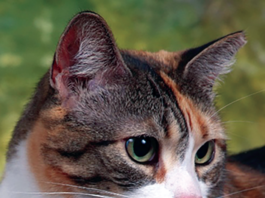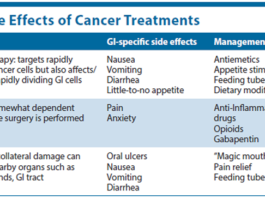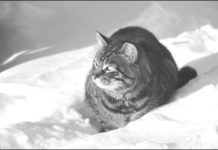The Seven Deadly Viruses to Beware
A virus, unlike a bacterium or a fungus, is not a living organism. Rather, a virus may best be described as a complex submicroscopic structure consisting of a bit of genetic material - its DNA or RNA blueprint - encased in a protein shell. Although more of a chemical than a creature, a virus nevertheless has an irrepressible inclination to reproduce itself rapidly and without limit in the body of a host animal that it has infected. Once it has entered a host, a viruss fundamental goal is to make as many copies of itself as possible, as quickly as possible.
All About the Alternative Cat Litters
Over the past decade, a number of products have entered the cat litter market as "alternative" litters. The chief claim of many of these litters is that they are made from plant-based or recycled materials, as opposed to clay, the basis of "traditional" kitty litters. As with most products or groups of products, there are both advantages and disadvantages to using alternative cat litters. One advantage that makers of these specialty litters feel appeals to cat owners with environmental concerns is that alternative litters - because they are made of biodegradable substances - present less strain on landfills. Some brands are even marketed as being "compostable" and/or burnable.
Antifreeze Dangers: Deadly Serious
As you cope with the frigid temperatures that come with winter, you may make it a habit of adding antifreeze to the radiator of your automobile. This substance-a bright green, syrupy chemical called ethylene glycol-serves to lower the freezing point of water and will certainly help to keep your car running smoothly throughout the colder months. Keep in mind, however, that ethylene glycol, if ingested by your cat, can prove deadly within a matter of days if the animal does not undergo prompt and expert veterinary treatment to get it out of its system.
Searching for Signs of Pain in Your Cat
Is there a clear way that we can tell that a cat is in pain? According to Andrea Looney, DVM, a senior lecturer in anesthesiology at the Cornell University Hospital for Animals, "We look at two categories of clinical signs - physiologic and behavioral. The physiologic signs include such indicators as heart rate, temperature, respiratory rate, blood pressure and the levels of certain stress hormones in the blood. "But these indicators are not as reliable as the behavioral signs," she continues. "Each cat is an individual, and we try to look at how they normally behave and how that behavior is different when they come in with complaints.
Vaccinations: The Benefits and Risks
During the past half-century, no fewer than 10 vaccines have been developed that, according to their manufacturers, can protect your cat against a wide variety of lethal feline diseases. In general, these claims of efficacy have been justified. According to Fred Scott, DVM, PhD, professor emeritus of virology at Cornell Universitys College of Veterinary Medicine and the founding director of the Cornell Feline Health Center, the vaccines have been responsible for "a tremendous improvement in feline health." A prime example is the vaccine created to protect against the feline panleukopenia virus (FPV). "Prior to the late 1960s and early 1970s," says Dr. Scott, "half of all cats that passed through a shelter developed panleukopenia within a few days - and as many as 90 percent of them died from it.
Fire Safety: Protect Your Pets
It may be human nature to postpone preparing for a disaster, but its vitally important that you take time now to put a plan in place before a fire occurs. Start by installing smoke detectors throughout your home and make sure the batteries are functioning properly. Change the batteries twice a year or more frequently if the smoke detector "beeps" to warn you that battery power is low. Many people put in new batteries when they change their clocks for daylight savings time. Next, gather together other essential supplies: cat litter, litter box and scooper, collars and up-to-date identification tags and/or microchips (with your cell phone number as you may not be reachable at home), a weeks supply of food (remember a can opener and spoon for serving wet food), bottled water, medications, current photos of your cats for ID purposes, and a few toys, towels and blankets.
Can Acupuncture Help Your Pet?
Three or four decades ago, few cat owners or veterinary practitioners in the U.S. knew anything whatsoever about acupuncture, the centuries-old Chinese system of health care that aims to treat physical disorders and their accompanying pain by inserting needles into specific points on a patients body. Today, thousands of veterinarians throughout the nation routinely practice acupuncture in their clinics, and countless cats are benefiting from it. "Im certainly an acupuncture advocate," says Andrea Looney, DVM, a senior lecturer in anesthesiology at the Cornell University Hospital for Animals. "I use it in treating between 10 percent and 20 percent of the patients that I see - not only cats, but dogs, horses and other animals as well." Dr. Looney stresses that she relies on acupuncture as a complementary technique, always using it in conjunction with the standard practices of Western veterinary medicine.
Cats and Kids Living Together Safely
Who isnt charmed by the image of an adorable kid holding and petting a cute, fluffy kitten? Children can benefit from having a cat, and vice versa. "The experience of bonding between the child and the cat can be invaluable," says Larry Lachman, PsyD, a licensed clinical psychologist, animal behavior consultant and author of Cats on the Counter: Therapy and Training for Your Cat, "and a child learns to increase compassion and empathy for nonhuman life."
Nasal Disease: Understand the Signs
Does your cat have a bad case of the sniffles? Its probably nothing to worry about. Just like you, your cat is apt to come down with a minor respiratory infection now and then, and it will pass. But if the runny nose that persists for more than a few days - and especially if the secretions thicken and become darker in color - you should take your pet to the veterinarian for an examination.
Providing for Your Pets
Many of us have spent considerable time planning for the care of our family members in the event that we die or become incapacitated. Unfortunately, though, we often fail to consider the needs of our smallest family members: our pets. In the past, most pet owners didnt think about making formal arrangements for their cats in their wills. But all thats changing, according to David Congalton, co-author of When Your Pet Outlives You: Protecting Animal Companions After You Die. "Historically, the problem has been lack of awareness, but thats all changed in the last decade," Congalton says. "Most states now allow pet trusts, and the attitude towards protecting animals has completely changed in courts and legal circles."
Hypothermia: A Winter Danger
Cats whose breed developed in frigid areas of the world are likely to tolerate cold weather better than cats whose origins can be traced to more temperate regions. But even the fattest, furriest Maine Coon will have only a slight edge over a trim, thin-coated Siamese when it comes to prolonged exposure to the biting winds, ice, snow and sleet that come with winter. Indeed, any cat that is left outside for extended periods of time when the temperature is below freezing - not to mention any poor creature that happens to tumble into an ice-cold pond - will be at risk for a potentially deadly drop in body temperature.
Your Cats Purrfect Sense of Time?
You have to get up at 6:00 a.m. during the week. But you dont even have to set your alarm, because your cat comes in and licks your fingers or jumps up and purrs on your chest just before you wake up. How do cats do it? Do they really sense what hour it is, or is it something else? Alas, this is one of the many enduring mysteries about cats, says Larry Myers, DVM, PhD, of the Auburn University School of Veterinary Medicine in Alabama. "Some of what appears to be cats telling time is entrainment. Its routine reinforced. Cats very quickly become aware of when human family members wake up, eat, go out and come home," says Dr. Myers, whose 18-year-old female cat wakes him at 6:00 a.m. daily for breakfast.














